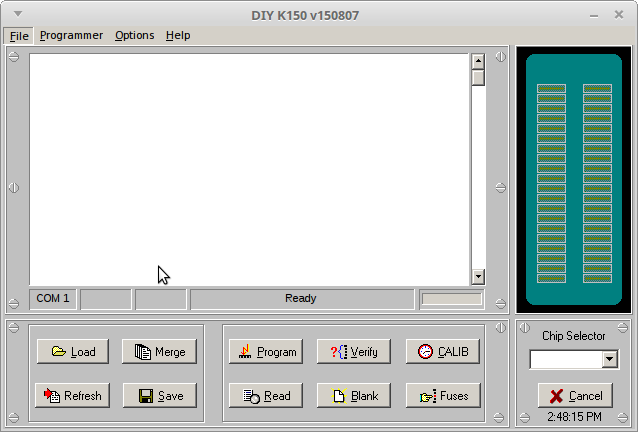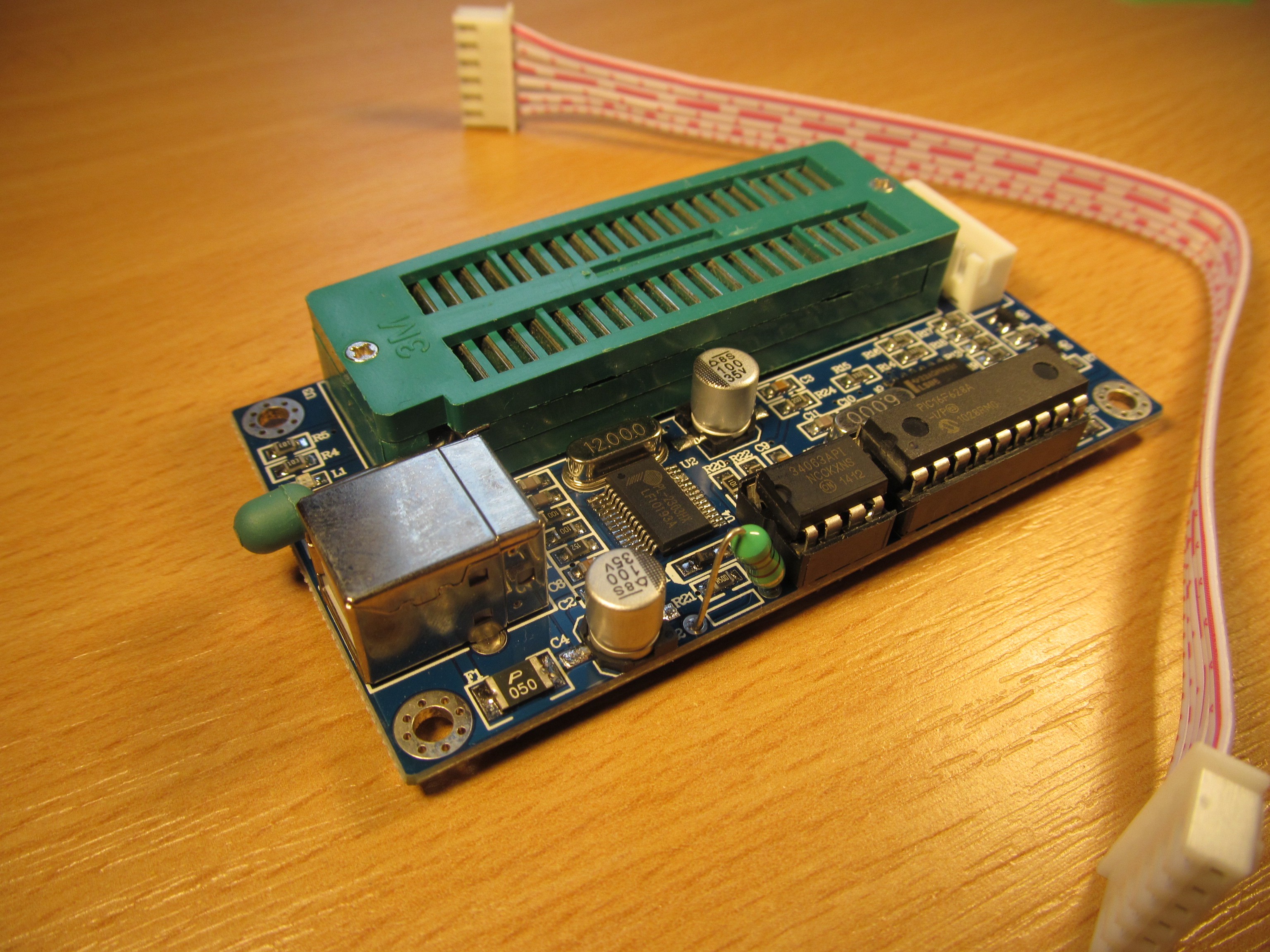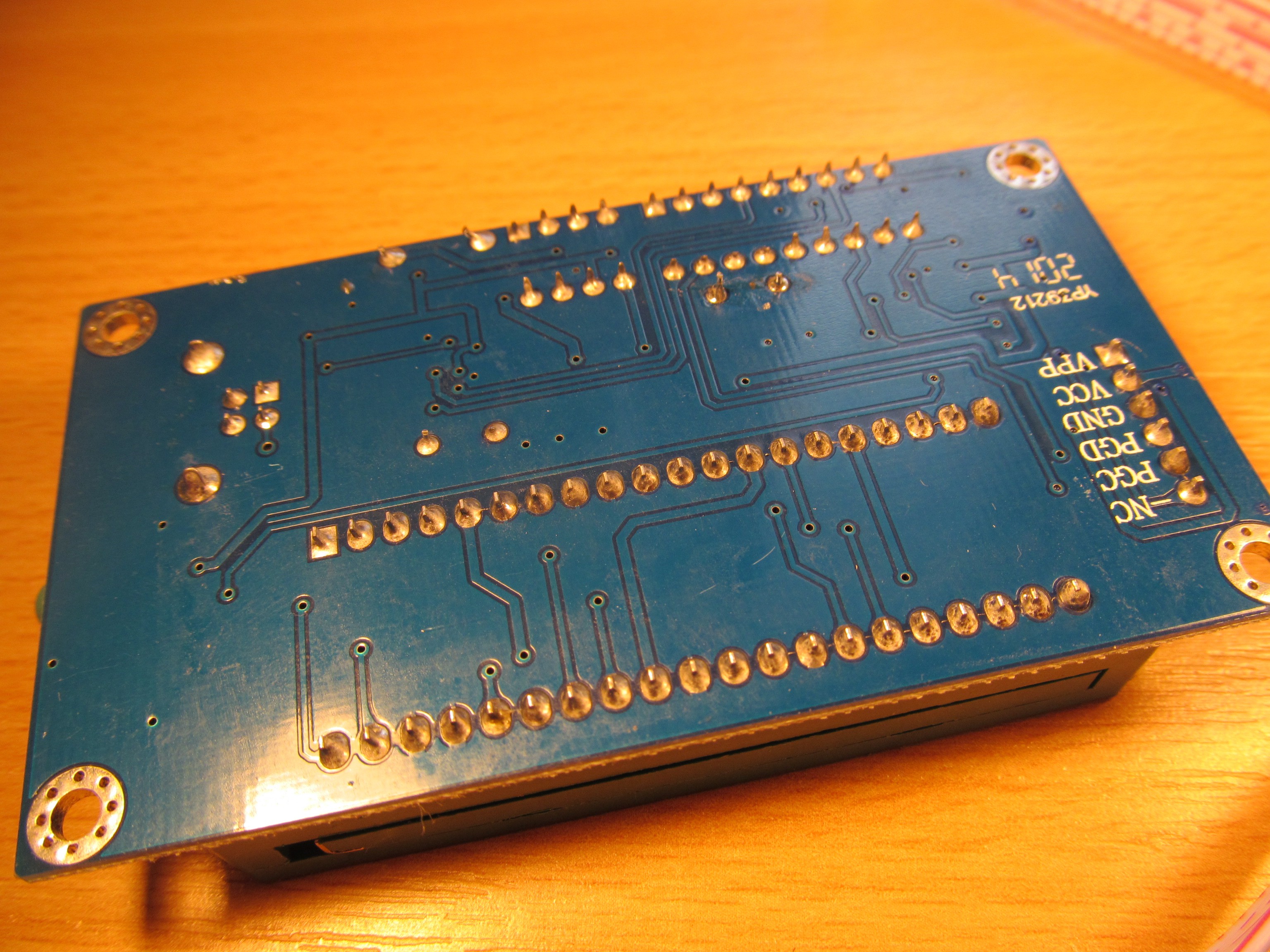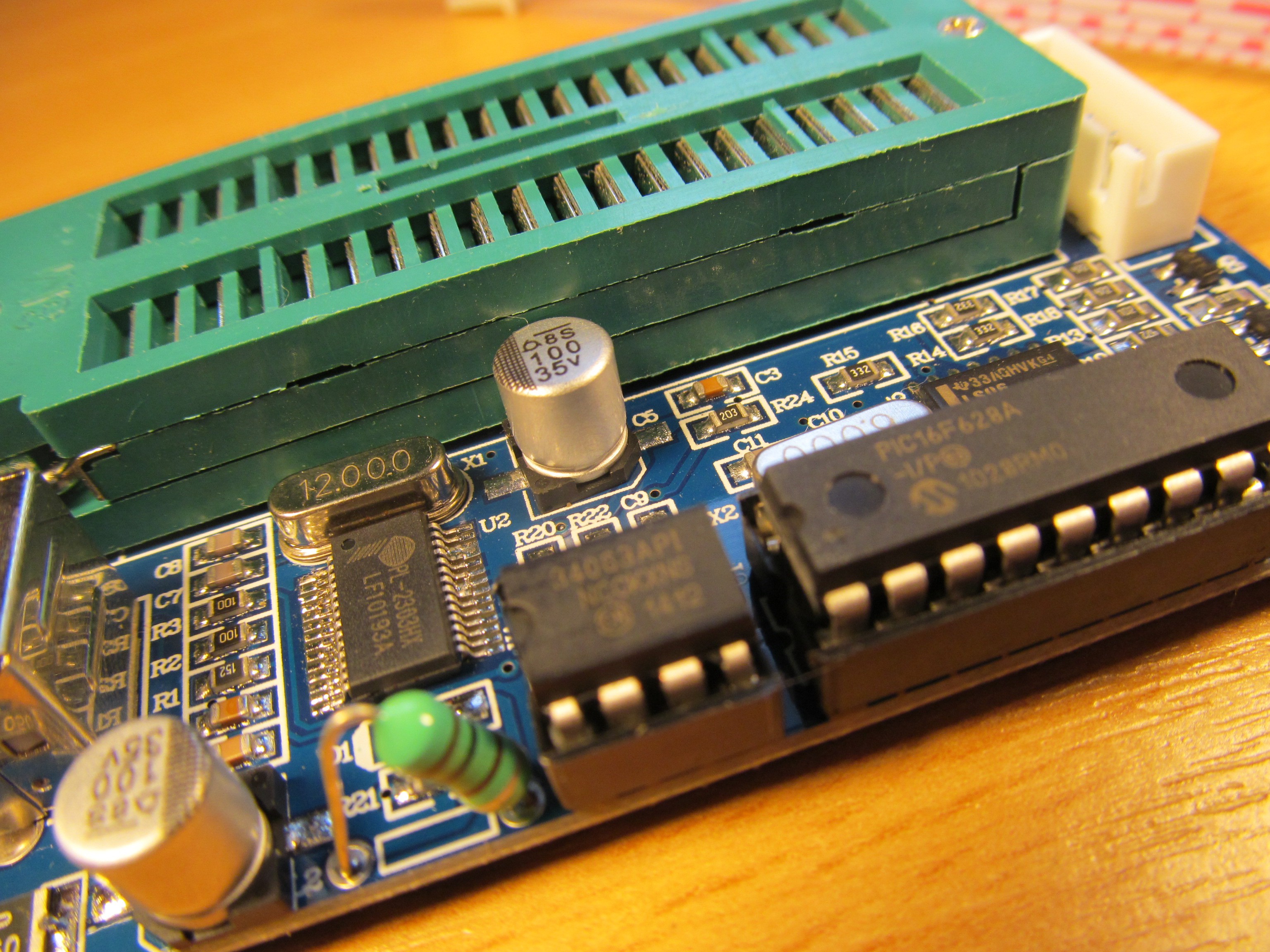-
Myths and legends of PIC microcontrollers
10/19/2016 at 09:03 • 9 commentsI built this list, because sometimes I'm bored enough to write the same things again and again, so I have stable place to link.
1) PICs require awkward proprietary tools based on Windows, so you can't use it on Linux or Mac.
Nope, see points 2 and 3.
2) There are no free (as free beer) tools for PICs.
No, there are. XC compilers - for 8-, 16- and 32-bitters - are available for Windows, Mac and Linux. If you wish, you may also use their MPLABX IDE, available for all three platforms as well - at no cost.
Note those compilers are stripped down version of paid compilers. You have worse optimizations for compilers (IDE itself is unrestricted), but it is simplest way to start. On the other hand, the compilers are perfectly adequate for DIY use; from my experience the difference between full and free compiler in case of XC32, is something around 2-6% of code and 5% speed penalty for free version, though YMMV. I understand somebody may not want this, so here we go to point 3:
3) There are no free (as freedom) and open-source tools for PICs.
Again, no. You can go barebones and compile from command line on your raspberry pi zero with SDCC compiler for 8-bitters or vanilla MIPS GCC for PIC32. Both are open-sourced.
I used SDCC in my project #Micro progmeter where is also quick guide for setting up the compiler with MPLABX IDE, though you can omit the IDE part and use compiler only. For PIC16 and PIC18, there is also open-sourced programmer #Microchip PIC Arduino based programmer so you have fully free and open-source toolchain for 8-bitters. SDCC is used also in Pinguino project, which is Arduino derivative for PIC micros.
When it comes to PIC32, you can use compiler from MPIDE too, which is Arduino derivative for PIC32. I personally use free tools for PIC32 with retroBSD project (BSD Unix running on PIC32) which has also set-up guide in case you don't know how to build your own compiler. In the case you don't want to build your own, you have ready to go binaries here.
Also, check out this toolchain based on GCC 8 for PIC32.
4) PICs are 4x slower than AVR, because it has clock divided by 4.
Nope, because wrong terminology. When it comes to 8-bit PICs, they have not divided clock, but 4-clock core, so it needs 4 clock cycles to execute one instruction. 16- and 32-bitters are different story altogether and folks insisting on 4x slower PICs usually have no idea about it, which gives clue of their argument quality. So, while we agree that PIC needs 4 clocks for one instruction* and AVR only one**, the AVR usually ends up at 16 or 20MHz (=16 or 20MIPS), while PIC18 are going to 64MHz (=16MIPS), delivering approximately the same speed - definitely not 4x difference.
* and ** - only short instructions take 4 or 1 cycle respectively. For AVRs, you have a lot of two, three and even four cycle instructions. There are corner cases where one architecture has advantage over the another.
5) 8-bit PICs are nasty to program, with poor instruction set and banking and whatnot
8-bit PICs are barebones RISC architecture, which is human unfriendly by definition. If you are faint of heart, don't do it. With PIC18 and newer PIC16 devices, you are really occasionally forced to do any banking at all due to access bank (for direct variables) and FSRs (for buffers and arrays). I've done a few medium to larger (more than 5k lines of asm code) PIC18 projects and all of them NEVER touched bank select register except of single initial setting once after reset.
All this applies for programming in assembly language. Use compilers and you can forget it.
6) Microchip is closed source, hobbyist unfriendly, while other vendors are not
Welcome to the real world. Most of hardware vendors don't give a shit about open-source tools, though some of them are using it for their own advantage. In fact, hardware vendors don't give attention about YOU, hobbyist, unless you buy truckload of silicon every month. Atmel didn't give a flying fsck about AVR-GCC for years -...
Read more » -
Cheap ebay stuff, K150 programmer
12/27/2015 at 14:22 • 0 commentsAs probably a lot of folks here, I developed very slight hoarding disorder, known also as "impulsive midnight aliexpress shopping sessions" over the time I tinker with electronics. I buy stuff that goes into "messy box" and after a time I find out it is very valuable item that can help me with my project.
Now, when thinking about future development of my arduino PIC programmer I remembered that I bought K150 programmer somewhere, perhaps ebay or aliexpress. It is available for price as low as 5-6USD that is absolutely unbeatable, as usual for chinese suppliers.
Not just price is unsurprisingly here - build quality is usual too, though for home and laboratory use it is IMHO OK. Engineering is classic too - rip-off of western product, in this case it is kitsrus K150 programmer, with a touch of engineering - MC34063 added as step-up converter for generating Vpp for older PIC micros. The ebay sellers point to download software directly from kitsrus website, it is classic clicky-blinky kind of software

A bit of googling shows the software leaves a lot of to be desired and is not very friendly with other than Windows OS and as its development ceased some 8 years ago, with every new version of Windows, probability of its proper working decreases. Linux/Mac users are out of luck - though the screenshot above was done in Linux, it obviously can't connect to hardware.
There were some initiatives to bring this programmer to other than Windows platforms - searching for K150 I found this site, pointing to this unavailable site. Digging in history points out that author planned his marriage and new apartment, so this is where hobbies and other fun are gone. As Dave Jones says, trap for young players.
I found this blog, pointing to sourceforge here, but it looks forgotten too.
Looking at the original schematics I can see they made a few changes (MC34063 mention above, FT232 to PL2303 conversion), but I believe the firmware is still untouched original, so except of the few changes the target interface part is the same, so not much of reverse engineering is needed.
Not that I don't have plenty of PIC programmers at hand, but this is hackaday, isn't it? If I'd like to bring this programmer out of dust, I have three options:
- Use windows and the old software.
- Use whatever platform and python software from the link above. Running 10 years old piece of software may not be great fun and bringing new chips into it could be problematic - I'm poor Python programmer. But this is definitely and option. There is even sketch of communication protocol inside the package.
- Rip off the PIC16F628 and stick in newer, pin compatible chip with custom firmware to accomodate newer PIC MCUs and use whatever software I like, for example fork of my arduino PIC programmer.
Oh yes, and there is even theoretical possibility of using USBASP compatible programmer for some newer PIC micros. I have to take a look at the sources.
My Projects
Projects I Contribute To
My Pages
Things I've Built
Polarograph
Another drawing robot. Built around ATmega328P https://picasaweb.google.com/111890741167251011072/Polarograph
Altimeter
The first project I wrote in C language, summer 2004 (or so). Built around PIC18F252 and MPX4115A https://picasaweb.google.com/111890741167251011072/Altimeter#
Nixie tube clock
Oh yes, another nixie tube clock. Built around MC68HC908QY2, SPI IO expaner and 74141 drivers. https://picasaweb.google.com/111890741167251011072/NTClock
IR remote control for PC
Receiving RC-5 IR codes, emitting keystrokes of virtual USB keyboard. Usable in windows/Linux with no PC side software. PIC16F648 and PIC18F2550. https://picasaweb.google.com/111890741167251011072/IRPCRC#5616163084686784802
PMI80 mini
Czechoslovak computer PMI-80 in its mini version, built around the 8080 chip. Single +5V supply. https://picasaweb.google.com/111890741167251011072/PMI80
Unusable computer, mark 3
This one has PIC24FJ64GA002 and two megabyte FLASH containing a few images for PIC. It runs PIC IDE, user can load other FLASH images from PC. https://picasaweb.google.com/111890741167251011072/SCUT3#
PIC handheld debugger, programmer, assembler, editor
I reverse engineered the PIC18 debug protocol and made portable debugger with PIC32. https://picasaweb.google.com/111890741167251011072/PICHandheldDebugger
Unusable computer, mark 2
Terminal with PIC24FJ64GA002 for dsPIC30F3012 running FlashForth. It is portable, low power (2mA@2,5V) and you can program it in Forth. https://picasaweb.google.com/111890741167251011072/NP3#
Unusable computer, mark 1
BASIC module with Atmel '51 chip and PIC18F2620 coded in asm for fun as advanced terminal. It's portable and you can program it in BASIC, that's what it does. https://picasaweb.google.com/111890741167251011072/NP2
Geiger counter
Simple Geiger counter, displaying counts per minute, counts total and total time. Based on PIC16F, coded in asm for fun. https://picasaweb.google.com/111890741167251011072/GMDetectorCounter
Linux ARM emulator
Emulator of ARM, running Linux. Emulation code taken from femous Dmitri Grinberg site, now running on PIC32., something like 20x faster. https://picasaweb.google.com/111890741167251011072/ARMEmulatorRunningLinux
CP/M computer
Z80 emulated on PIC32, with a few virtual peripherals. Custom BIOS for CP/M system, tailored for the emulator specifics. https://picasaweb.google.com/111890741167251011072/CPMTest1 https://picasaweb.google.com/111890741167251011072/CPM
GPS logger, mark 4
Except of boring tasks, liek logging and computing bearing/distance to POI, this one has SD card with lots of maps, able to show position on map. More photos at https://picasaweb.google.com/111890741167251011072/GPSMapperTest1#
GPS logger, mark 3
Another one GPS logger. Based on PIC24FJ64GA002, doing some more advanced math, like computing distance and bearing to point of interest. More photos at https://picasaweb.google.com/111890741167251011072/GPS2#
GPS logger, mark 2
Another GPS logger, now with display, based on PIC18F25K10. More photos at https://picasaweb.google.com/111890741167251011072/GPS1#
GPS logger, mark 1
SImple, cheap and ugly GPS logger, based on PIC18F1320 and duct tape. One afternoon project, logging raw GPS stream into AT45DB161 memory. More photos at https://picasaweb.google.com/111890741167251011072/GPS3#
Projects I Like & Follow
Share this profile
ShareBits
Become a Hackaday.io Member
Create an account to leave a comment. Already have an account? Log In.



 jaromir.sukuba
jaromir.sukuba Arya
Arya Ted Yapo
Ted Yapo Voja Antonic
Voja Antonic Yann Guidon / YGDES
Yann Guidon / YGDES Aleksandar Bradic
Aleksandar Bradic


 Just4Fun
Just4Fun c.Invent
c.Invent Max.K
Max.K Alastair Hewitt
Alastair Hewitt Marcel Thürmer
Marcel Thürmer Nixie
Nixie brtnst
brtnst Martin
Martin 5Volt-Junkie
5Volt-Junkie Mitsuru Yamada
Mitsuru Yamada Plasmode
Plasmode Thomas Baum
Thomas Baum ziggurat29
ziggurat29 Jan Waclawek
Jan Waclawek agp.cooper
agp.cooper
